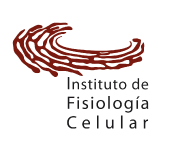Anti-virulence properties of plant species: Correlation between in vitro activity and efficacy in a murine model of bacterial infection
Díaz-Núñez, J. L., Pérez-López, M., Espinosa, N., Campos-Hernández, N., García-Contreras, R., Díaz-Guerrero, M., Cortes-López, H., Vázquez-Sánchez, M., Quezada, H., Martínez-Vázquez, M., Soto-Hernández, R. M., Burgos-Hernández, M., González-Pedrajo, B., & Castillo-Juárez, I. (2021). Anti-Virulence Properties of Plant Species: Correlation between In Vitro Activity and Efficacy in a Murine Model of Bacterial Infection. Microorganisms, 9(12), 2424. https://doi.org/10.3390/microorganisms9122424
Several plant extracts exhibit anti-virulence properties due to the interruption of bacterial quorum sensing (QS). However, studies on their effects at the preclinical level are scarce. Here, we used a murine model of abscess/necrosis induced by to evaluate the anti-pathogenic efficacy of 24 plant extracts at a sub-inhibitory concentration. We analyzed their ability to inhibit QS-regulated virulence factors such as swarming, pyocyanin production, and secretion of the ExoU toxin via the type III secretion system (T3SS). Five of the seven extracts with the best anti-pathogenic activity reduced ExoU secretion, and the extracts of and were identified as the most active. Therefore, the abscess/necrosis model allows identification of plant extracts that have the capacity to reduce pathogenicity of . Furthermore, we evaluated the activity of the plant extracts on . T3SS (Δ) and QS (Δ) mutant strains were assessed in both the abscess/necrosis and sepsis models. Only the Δ strain had lower pathogenicity in the animal models, although no activity of plant extracts was observed. These results demonstrate differences between the anti-virulence activity recorded in vitro and pathogenicity in vivo and between the roles of QS and T3S systems as virulence determinants.




